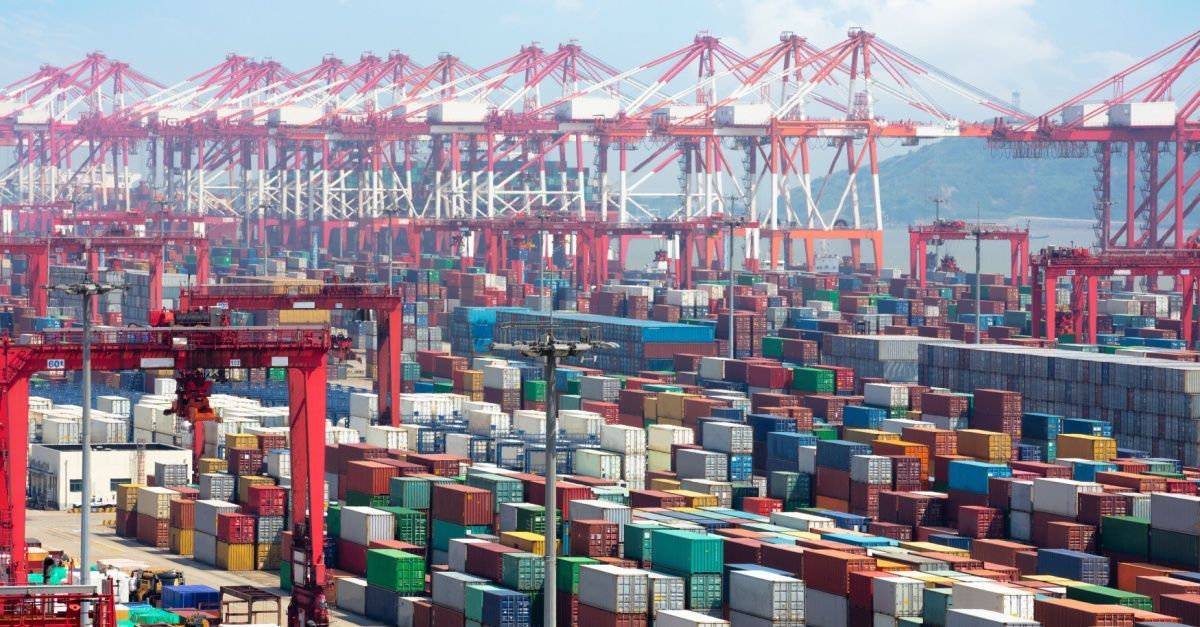Improving OTIF Rates with Expedited Transportation
Blog Post CTA
You're at the helm of a shipping operation where every minute counts and deadlines loom large. Getting your goods delivered precisely on time and in full isn't a goal but literally the heartbeat of your business. If you don’t know or understand the 'On-Time In-Full' (OTIF) acronym, now’s the time to learn. Because those four letters represent much more than a catchy abbreviation, they're a commitment to delivering shipments precisely as promised, complete and undamaged. Falling short on OTIF can lead to devastating consequences, including customer dissatisfaction, financial penalties, or worse.
So now, let's get to know your secret weapon in avoiding such adverse outcomes: expedited transportation. When you hear the term "expedited transportation," you probably think of fast transit and racing against the clock. But in reality, it's about so much more: making smart, timely choices. How can you leverage it to
meet OTIF requirements and improve rates? Think of this article as your playbook with expedited transportation as the star QB.
For Today’s Shippers, OTIF Rates Remain a Challenge
Walking the tightrope of high OTIF rates can feel like a high-stakes balancing act for shippers. You're constantly juggling to ensure every order is complete and punctually delivered. Miss the mark, and the consequences are more than just a red mark on a report card — think missed delivery windows and incomplete orders, each slip-up inching you closer to costly penalties. It's a game where precision is key, and the cost of a misstep can ripple through your business.
The High Cost of Missing the Mark: Penalties for Missed Deliveries and Incomplete Orders
Imagine the frustration when a carefully planned delivery misses its window or arrives incomplete. It's like preparing a perfect meal only to have it served cold. In the shipping world, such slip-ups do more than disappoint; they often lead to penalties and real hits to your bottom line and reputation.
Financial Repercussions: The U.S. food retail industry sheds around $15–20 billion in sales annually due to unavailable or unsellable items, roughly 2-3% of total sales. Penalties for not meeting OTIF requirements can reach a staggering $5-6 billion annually in the U.S.- Operational Hurdles: About a quarter of deliveries show up over two hours early, throwing a wrench in distribution center schedules and leading to idle assets and demurrage costs. This inefficiency consumes industry capacity and increases operational challenges.
- Strained Supplier-Retailer Ties: A survey of 300 retail buyers revealed that 100% value on-time delivery highly, with 73% having severed ties with suppliers over delivery issues. These relationships are increasingly at risk, with OTIF non-compliance rates averaging 20-30%.
- Penalties from Major Retailers: Retail giants like Walmart and Kroger enforce strict penalties for OTIF non-compliance. Walmart fines 3% of the purchase price for early, late, or incomplete orders. At the same time, Kroger imposes a $500 fine for orders over two days late. These fines can accumulate rapidly, especially for larger orders.
- Sales Impact: Incomplete deliveries, even when on time, contribute to up to 30% of out-of-stock situations, leading to an estimated $1 trillion in lost sales globally each year.
The Role of Expedited Transportation in a Complex Logistics Environment
In a world where every second counts, expedited transportation is the key to mastering logistics with speed and certainty. Let’s look more deeply at how expedited services go beyond traditional shipping methods, offering tailored, efficient solutions crucial to meeting tight OTIF goals.
Understanding Expedited Transportation: Speed and Reliability Combined
Expedited transportation is more than just quick shipping; it combines efficiency, speed, and reliability. Imagine it as giving your cargo a VIP pass, optimizing every aspect for the fastest delivery possible. Its hallmarks are direct routes that minimize stops, dedicated resources like exclusive vehicles and teams focused solely on your shipment, and enhanced tracking for real-time updates on your shipment's journey.
How Expedited Services Differ from Standard Shipping Methods
Standard shipping is efficient but bound to a set schedule and multiple stops like the regular bus service. Expedited transport, on the other hand, is akin to a private taxi ride explicitly tailored to your urgent needs. While standard shipping suits routine deliveries, expedited services shine in scenarios where time is of the essence. These services offer faster delivery times by significantly reducing transit time, provide customized solutions for unique shipping needs, and involve less cargo handling, lowering the risk of damage and delays.
The Advantages of Expedited Transportation in Meeting OTIF Goals
Do you still need to be sold on expedited services meaningfully differing from standard shipping methods? Consider the following advantages that expedited transportation has in achieving OTIF goals:
Swift and Safe Deliveries: Ensures shipments reach their destinations quickly and intact.- Mitigating Financial Risks: Reduces the likelihood of penalties and lost opportunities due to delays.
- Strategic Business Choice: Enhances your business's reputation and reliability in a competitive market.
- Improved Customer Satisfaction: Leads to happier clients thanks to reliable and prompt delivery.
- Enhanced Flexibility: Offers the ability to respond quickly to last-minute orders or changes in demand.
3 Strategies for Improving OTIF Rates
The world of expedited transportation is a high-stakes race against time with zero margin for error. It's a thrilling yet challenging arena where the right strategies make all the difference. In this dynamic setting, let's dive into three game-changing strategies that promise to boost your OTIF rates and transform your shipping experience into a smoother, more satisfying adventure for you and your customers.
Precise Planning and Forecasting
OTIF success is the holy grail in the world of expedited shipping. Achieving it begins with precise planning and forecasting. Why? It's simple. By accurately predicting customer demand, you can seamlessly align your production schedules with shipping windows. Doing so ensures that goods are ready to ship right when a truck is available, minimizing delays and maximizing efficiency.
Consider this hypothetical scenario: A company anticipates a seasonal surge in demand for its product. By using accurate forecasting methods, it increases production in advance. When the surge arrives, they're ready. Not only are products available, but they've also coordinated with expedited shipping providers ahead of time. This foresight means trucks are waiting to roll out as soon as products are off the line, leading to a significant increase in OTIF delivery rates.
Carrier Selection and Performance
The reliability of your carrier is the core of your logistics. Yet, not all carriers are created equal when it comes to expedited transport. Be sure to evaluate and select those with a proven track record of on-time deliveries. Your due diligence should go beyond just checking boxes and dive deep into their performance history, customer feedback, and operational strengths. The benefits of forging long-term partnerships with these dependable carriers go beyond reliability. They understand your business needs, can anticipate challenges, and are often willing to go the extra mile, quite literally, to meet your OTIF targets.
Real-Time Visibility and Tracking
In expedited transportation, time is not just money; it’s everything. It's here where real-time tracking and visibility become game-changers. The use of advanced technology in providing real-time updates on your shipment’s progress is a tech-driven approach that transforms how you manage logistics, offering a window into each stage of the transportation process. It enables proactive issue resolution, ensuring that you address potential delays before they impact your OTIF. These advantages all lead to an underlying goal far beyond tracking: real-time insight can help build a resilient, responsive, and reliable shipping strategy.
Streamlining Your OTIF Success with Entourage Freight Solutions
As we've explored, expedited transportation is not just about speed; it's about making smart, strategic choices. From the high costs associated with missing delivery targets to the complex logistics environment, the challenges are many. But so are the opportunities for those ready to embrace innovative solutions to improve OTIF rates.
It's here where
Entourage Freight Solutions (EFS) steps in. As a dedicated logistics expert, EFS offers a range of services designed to meet the unique needs of your shipping operation. Whether it's
Full Truckload (FT) for dedicated shipments,
Less Than Truckload (LTL) for efficient multi-destination transport, specialized
Refrigerated Trucking, or
cross-docking solutions, EFS has you covered. They excel in managing
retailer shipping,
DC-to-DC transfers,
and freight management solutions while leveraging their extensive
food service logistics background.
Don't let logistical challenges slow you down. Embrace the opportunity to excel with EFS.
Request a quote today and take the first step towards seamless, efficient, and reliable shipping solutions.









